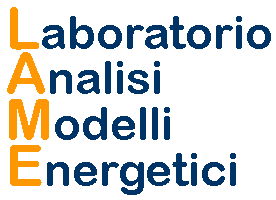
EDPM:
Energy
Demand
Projection
Model
from 2012 to present
DESCRIPTION OF THE PROJECT
EDPM-CN has been built in the framework of Policy C.3.a (“Development/ adaptation and application of medium and long-term energy demand projection model in China”) planned in the 5-years research activities of the EC2 (Europe-China Clean Energy Centre) at Tsinghua University in Beijing, China. The objective of the policy action was to simulate China energy demand evolution until 2030 under different technology and policy scenarios.
In the project, the description of the Chinese Energy System has been closely related to the structure of statistical data available for energy commodities, end-use technologies and main macro-economic variables. Moreover, energy demand dynamics have been related to many factors like population, income, economy structure, technological framework, energy prices, resources availability, production and consumption styles, environment capacity, institutional organization, and management mode.
To achieve the desired results, a simulation model has been developed. EDPM-CN is a tool for energy demand analysis and relevant policies design able to analyze the above mentioned factors’ effects on mid/long-term energy demand under different scenarios (with different time-frame, technology, energy and environmental policies) in an objective, quantitative, scientific, comprehensive way, and to provide scientific proof for developing rational energy strategies, plans, and policies. This model can operate either at Country, Province/Area and Climatic Zone level and it is structured into a series of modules. The projections of the Energy (related) Service Demands are obtained by
• starting from the initial values of the energy service demands related to the Base Year conditions
• using suitable drivers (the Macro Economic scenario variables, such as households per capita floor area, value added of the main industrial sectors, etc.) related to the population, economic growth, economic structure, production and consumption style, environment capacity, institutional structure, and management mode, and
• adopting specific Energy Requirements and elasticities for the Services Demands.
The projections of the Energy Commodity Demands are evaluated by taking into account the main processes included into the End-Use Technology Reference System and by assuming specific hypotheses for the technological advancement and energy policies in each sector (residential, commerce, industry, transportation and agriculture) and region (Country, Province/Area or Climatic Zone). The resulting Energy Demand Projections can be directly used by any external Energy Supply Model.
LAME ACTIVITIES
In WP2
The LAME research group was involved in all the work packages. In particular, it worked in WP1 and it was responsible for the identification of the Reference Energy System to adopt, and for the definition and the implementation of the Model structure. An Excel®-based tool was developed, with more than 160 worksheets organized into five modules and a series of command buttons and ActiveX controls which allow an easy management of input data and the selection of the region and of the scenarios. The group has also collaborated with the Chinese Energy Research Institute (ERI) in WP2 for the collection of figures from statistical sources (China Statistical Yearbook, China Energy Statistical Yearbook, etc.). As a further development of the work, a specific version of the model (called “Energy for Buildings”) has been implemented for evaluating the energy demand related to the residential and commercial buildings. In this version, a more detailed level of description have been adopted, in order to allow specific analyses. In particular, the end-use technologies are not aggregated consumption technologies (as in the general EDPM-CN model) but real technologies, with different values of efficiency and share of utilization. The activity related to the development of EDPM-CN model is still continuing and future analyses on Power and Heating and Industrial sectors are planned
WORK PACKAGES
WP2: Data Collection
WP3: Model calibration

